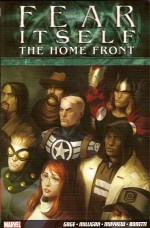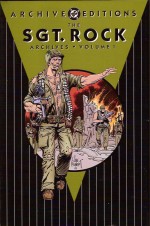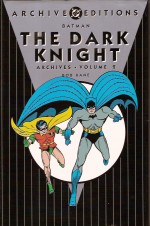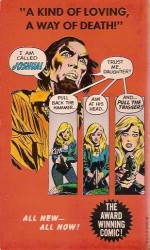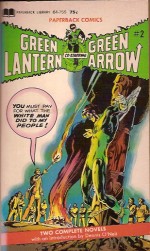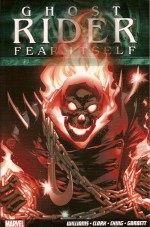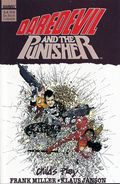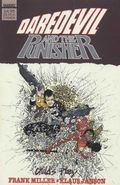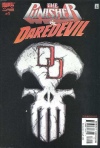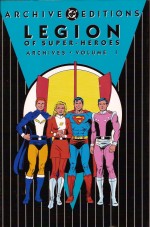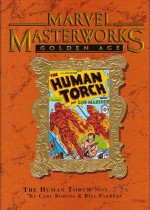In keeping with my self-created venerable Holiday tradition here’s another selection of British Annuals which fundamentally contributed to making me the way I am today, selected not just for nostalgia’s sake but because they are still, interesting, eminently palatable and worthy of your attention, even under here in the disconcertingly futurist yet disappointingly dreary 21st Century (and yes, I am still eagerly anticipating my personal jet-pack and robot-butler under the tree this year…)
After decades when only American comics and nostalgia items were considered collectable or worthy, of late there’s been a welcome resurgence of interest in home-grown comics and stories. If you’re lucky enough to stumble across a vintage volume, I hope my words can convince you to acquire it. However, the best of all worlds would be further collections from those fans and publishers who have begun to rescue this magical material from print limbo in affordable new collections…
Great writing and art is rotting in boxes and attics or the archives of publishing houses, when it needs to be back in the hands of readers once again. On one level the tastes of the public have never been broader than today and a selective sampling of our popular heritage will always appeal to some part of the mass consumer base. Let’s all continue to reward publishers for their efforts and prove that there’s money to be made from these slices of our childhood.
Marvel Comicbook Annual 1970
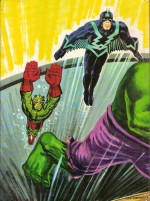
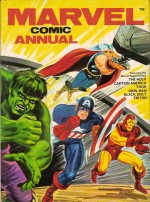
By various (World Distributors, Ltd.)
No ISBN – Standard Book Number: 7235-0072-X
When Stan Lee stormed the American comic-book industry in the early 1960s, his greatest weapon wasn’t the compact and brilliant talent pool available nor even the proverbial idea whose time had come, but rather his canny hucksterism and grasp of marketing and promotion. DC, Dell/Gold Key and Charlton all had limited overseas licenses (usually in dedicated black-and-white anthologies like Alan Class Comics such as Suspense) but Lee went further, reselling Marvel’s revolutionary early efforts all over the world.
In Britain the material appeared in the aforementioned Class Comics and reformatted in weeklies like Pow, Wham, Smash and even the venerable Eagle. There were two almost wholly Marvel-ised papers, Fantastic and Terrific, which ran from 1967 to 1968 with only one UK originated strip in each. These slick format comics mimicked Marvel’s US “split-books†and originally featured three key Marvel properties in each. Appearing every seven days, however quickly exhausted the company’s back catalogue.
After years of guesting in other publications, Marvel secured their own UK Annuals at the end of the 1960s through the publishing arm of World Distributors and this second sparkling collection from 1969 is one of the very best – and worst!
Gone are the text stories, quizzes and game pages which traditionally padded out most British Christmas books, replaced with cover-to-cover superhero action produced by the emergent House of Ideas at the very peak of its creative powers. Moreover it’s in full colour throughout – an almost unheard of largesse at the time.
Behind the delightful painted wraparound cover the enchantment commences with a magnificent but ultimately frustrating Thor tale (from issue #165 June 1969) from Lee, Jack Kirby & Vince Colletta wherein the Thunder God tackled genetically engineered future man ‘Him!’, before dissolving into a maniacal rage in the first of a two-part tale from his own American comicbook. The story and art are of course, incredible, but – even worse than no batteries on Christmas morning – the concluding instalment isn’t included in this volume. AARRGH!
From Captain America #100, April 1968 ‘This Monster Unmasked!’ by Lee, Kirby & Syd Shores, was the final chapter of an epic adventure (running in Tales of Suspense #97-99 and also not included here) which found the Sentinel of Liberty, his new girlfriend Agent 13 and the Black Panther riotously recapping the hero’s origin whilst battling a resurrected Baron Zemo to save the planet from utter destruction…
‘The Warrior and the Whip!’ by Lee, Gene Colan & Frank Giacoia and ‘At the Mercy of the Maggia’ by Archie Goodwin, Colan & Johnny Craig (Tales of Suspense #98-99, February and March 1968) are less satisfying. Not because the individual episodes are in any way deficient, but because the extended combat between Iron Man, gangsters, AIM Agents and super-creeps constitutes only chapters two and three of a four-part yarn and once again ends on a chilling cliffhanger…
In deference to tradition there is a single-page fact-feature. ‘Triton’s World’, illustrated with traced Kirby fish drawings from various comics, spotlighting a number of outrageous but actual sea-dwellers before the aquatic Inhuman joins the rest of the Royal Family of Attilan in ‘Silence or Death!’ (a Tales of the Inhumans back-up from Thor #149, February 1968) introducing young Prince Black Bolt in a superb and compelling, COMPLETE, five-page clash with Maximus the Mad by Lee, Kirby & Joe Sinnott.
At least the Marvel mayhem ends on a blockbusting high-note with ‘Monster Triumphant!’ from Incredible Hulk #108, October 1968 by Lee, Herb Trimpe & John Severin which, although another concluding chapter, had the decency to nominally recap proceedings before the Green Goliath, Nick Fury Agent of S.H.I.E.L.D. and his soviet counterpart Yuri Brevlov spectacularly scotched the sinister plans of Oriental oligarch the Mandarin to bring this book to a crunchingly cathartic close…
Inexplicably, despite how annoying re-reading these oft-reprinted tales felt today, the pint-sized me (well, quart-sized if I’m totally honest) really loved this collection – the fantastic resilience of youth, I suppose – and I will admit the art has never looked better than on the 96 reassuringly solid extra-large pages here: bold heroes and dastardly villains going wild and forever changing the sensibilities of a staid nation’s unsuspecting, extremely forgiving children. Miraculous, Marvellous Magic!
© 1970 Marvel Comics Group. All rights reserved.
In future years UK Marvel Annuals would provide full colour reprint strip extravaganzas, but in 1966 the material just wasn’t there. Thus this peculiar novelty: a comforting 96 sturdy pages of bold illustrations, games, puzzles and prose stories featuring Marvel’s mightiest in exceedingly British tales of skulduggery and derring-do.
Another factor to consider was the traditions of the UK market. US comics had been primarily strip based since the 1930s, but British weeklies had long provided Boy’s and Girl’s “papers†that were prose-based. In fact DC Thompson had persevered with illustrated text periodicals until well into the 1960s. So the seasonal annuals provided a vital sales peak of the publishing year and a guaranteed promotional push (see Alan Clark’s superb The Children’s Annual for more information). Any comic worth its salt needed a glossy hardback on the shelves over the Christmas period…
Released Christmas 1969, perfectly portioned out to fit into a book intended for a primarily new and young audience.
Land of the Giants Annual 1969
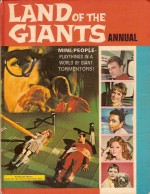
By Tom Gill & various (World Distributors {Manchester} Ltd.)
No ISBN
British Comics have always fed heavily on other media and as television grew during the 1960s – especially the area of children’s shows and cartoons – those programmes increasingly became a staple source for the Seasonal Annual market. There would be a profusion of stories and strips targeting not readers but young viewers and more and more often the stars would be American not British.
Much of this stuff wouldn’t even be as popular in the USA as here, so whatever comic licenses existed usually didn’t provide enough material to fill a hardback volume ranging anywhere from 64 to 160 pages. Thus many Annuals such as Daktari, Champion the Wonder Horse, Lone Ranger and a host of others required original material or, as a last resort, similarly themed or related strips.
Land of the Giants debuted in America in September 1968, the fourth of producer Irwin Allen’s incredibly successful string of TV fantasy series which also included Lost in Space, Voyage to the Bottom of the Sea and The Time Tunnel. The premise was that in the far-future of 1983 the occupants of Sub-Orbital Space-liner flight 703 from Los Angeles to London fell through a space-warp and landed in an incredible world twelve times larger than ours (mimicking the dimensions of the Brobdingnagians in Gulliver’s Travels) but closely paralleling Earth in the primitive era of the mid 1960s.
The motley and disparate passengers and crew of the ailing Spindrift thus had to survive and seek a way to return home whilst giant beasts, agents of the totalitarian government of that colossal planet, greedy opportunists and their own perverse natures all conspired against them…
The TV series generated 51 episodes and ran until 1970, spawning a Viewmaster reel and book, comics, toys and a string of novels by Murray Leinster. Since only one issue of the Gold Key comicbook had been released by the time of publication, (also providing the photo-cover above) this British Land of the Giants Annual compiled in late 1968 for the Christmas market relied heavily on criminally uncredited British filler – in the traditional form of text stories and features.
This book was produced in the standard UK format of full-colour for the American comics reprints and certain sections balanced with the more economical black and one other colour (blue, green brown or purple for the remainder, either brief prose stories or puzzles, games or fact-features on related themes. As for the writers and artists of the originated material your guess is, sadly, as good as or better than mine, but almost certainly generated by the wonderful Mick Anglo’s publishing/packaging company Gower Studios (although much of the innovative and edgily evocative illustration reminds me of Paul Neary’s 1970 Hunter strip in Warren’s Eerie)…
As the book is aimed at youngsters most of the British material is told from the viewpoint of Barry Lockridge – and dog Chipper – travelling unaccompanied to meet his parents in London. The mayhem and mystery begins with the novelette ‘Crash into the Unknown’ recapping the terrifying crash-landing in the Land of the Giants and offering a few hints into the possibly man-made nature of the space-warp which trapped them before the quiz ‘The Name’s the Same’ lightens the mood before ‘The Happy Return’ found the diminutive castaways battling a rogue warp-scientist and Secret Police and the fact-feature ‘Giants of Earth’ recounted a selection of geological behemoths.
The science bits continued with ‘Other Days: Other Giants’ which spotlighted dinosaurs and prehistoric beasts whilst ‘The Bigger They Are’ enumerated historical heroes who battled overwhelming odds. The fantasy adventure resumed in ‘The Toy Trap’ with giant terrorists using remote controlled models to deliver bombs – clockwork vehicles the puny Earthlings desperately needed in this vast expanse of a new world…
After some mind-boggling astronomical ‘Star-Facts’ the US comic strip adventure ‘The Mini-Criminals’ Part I, (illustrated by Tom Gill and perhaps scripted by Paul S. Newman) opened with ‘The Power-Stealers’ as the crew’s perpetual search for fuel sources to re-energise the Spindrift led to their capture by an opportunistic and imaginative thief. In this action-oriented strip the focus was very much on passengers Mark Wilson and fugitive conman Fitzhugh plus he-men crew members Captain Steve Burton and co-pilot Dan Erickson…
‘Barry and the Bankrobbers’ returned to British prose episodes as the boy and his dog stumbled into a bold daylight robbery before ‘The Mini-Criminals’ tempestuously terminated in an explosive showdown after ‘The Torch is Lit’, quickly followed by a themed literary and historical quiz ‘All About Giants’.
The girls got to hog the spotlight in ‘The Lost One’ as stewardess Betty Hamilton and flighty socialite Valerie Scott encountered an Earth astronaut who had been stranded in the Land of the Giants for 32 years whilst, after technological/industrial fact-feature ‘Man-made Monsters’, ‘The Bargain’ found little Barry and a giant toddler saving the day when Herculean fire-fighters extinguished a small grass blaze and inadvertently washed the Spindrift and crew into a sewer grate.
Lemuel Gulliver’s trip to Brobdingnag was reviewed in the article ‘Points of View’ (illustrated by somebody named “Fryerâ€) whilst the novelette ‘Nightmare in Giantland’ had the crew fall into a fairground only to become a puppet attraction, after which the double-page board-game ‘Terror in the Woods’ offered a few moments of post-Christmas dinner family interaction – as long as you could find some dice – before the adventures culminated in Secret Police espionage and intrigue as the Earthlings became ‘The Mini-Spies’ for an anti-government scientist and this big book of fun, fact and thrills ended educationally with ‘The Giant One’; a visually impressive animal comparison chart matching up Elephants, Rhinos, Buffalo, Brontosauruses (still believed to be real back then, remember?) against the incredible Blue Whale.
These yearly slices of screen-to-page magic were an intrinsic part of growing up in Britain for generations and still occur every year with only the stars/celebrity/shows changing, not the package. The show itself has joined the vast hinterland of fantasy fan-favourites and, if you want to see more, in 2010 Hermes Press collected the material from all five US Land of the Giants comicbooks into one sparkling hardback Land of the Giants the Complete Series which I’ll get around to reviewing one day (so many books, so little time or budget)…
© 1969 Twentieth Century-Fox Television, Inc. and Kent Productions. Inc. All rights reserved throughout the world.
Superman Bumper Book
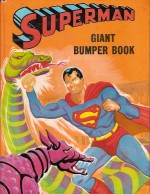
By various (Top Sellers)
No ISBN: ASIN B000RFBZYI
By the end of the 1960s I was an unashamed addict for all things comic. Whether home grown material targeting every market from football strips in Lion, Tiger or Victor to adapted literary classics in Look and Learn, foreign strip-books such as Asterix and Tintin or the comparatively diminutive American imports from DC, Marvel, Archie, Harvey, Gold Key and Charlton, I wanted them all and relished every graphic moment.
Even re-reading the same stories wasn’t important, as this sparkling book, still riding the coattails of the late 1960s superhero boom sparked in the UK by the live action Batman TV show and the Superman/Superboy animated cartoon show, will attest.
Released for the Christmas market this Superman Bumper Book combined text-stories and puzzle material generated by the Mick Anglo studio with a selection of relatively recent or reprinted Man of Steel yarns, all outrageously re-coloured in the flat yet beguiling full-colour process which graced most Top Seller Annuals.
I suspect the text features were intended for or left over from the 1967-1968, black and white TV Tornado weekly…
The extravaganza opens with an Editorial Direct Current feature exploring the bizarre preponderance of “LL†names in the character’s mythology after which ‘When Superman Killed his Friends’ (by E. Nelson Bridwell & Pete Costanza from Superman #203, January 1968) offered an eerie alien menace and a seemingly impossible dilemma for the Action Ace. This was followed by a prose Batman adventure ‘Mr. Kronos Gets Bats in His Belfry’ probably by Anglo himself and very much in the manner of the Adam West/Burt Ward TV series, after which ‘The Fortress of Fear’ pitted Superman against his own suddenly sentient arctic sanctuary in a chilling thriller originally seen in #204 by Cary Bates & Al Plastino.
Bracketed by a brace of ‘Laugh-In’ pages of spot-gags ‘The Jolly Jailhouse’ (Superman 139, August 1960 by Jerry Coleman & Plastino) provided a light-hearted clash between a would-be dictator and World’s Most Uncooperative political prisoner Clark Kent, after which Special Agent Clint Cutter travelled to the Middle East to squelch a deadly arms race in the prose vignette ‘Guns For Sale’.
Mr. Mxyzptlk was looking for trouble when he manifested a ‘Trio of Steel’ (Superman #135, February 1960, by Jerry Siegel & Plastino) after which the photo-feature ‘Super Tec!’ examined the then current Sexton Blake TV series before Superman returned and was almost killed by the foppish and ludicrously lethal ‘Captain Incredible’ (Action Comics #354, September 1967 and courtesy of Bates & Plastino).
‘Challenge to Superman’ was another Anglo-originated prose short-story after which two more Plastino yarns appeared. ‘Superman’s Black Magic’ (scripted by Siegel for Superman #138, July 1960) saw the hero impersonate the Devil to scam some crooks whilst ‘The Great Mento’ (by Robert Bernstein, #147, August 1961) found the hero apparently helpless against a mind-reading blackmailer. Those comic classics were separated by a cartoon adventure of ‘The Friendly Soul’ by cartoonist and acclaimed industry historian Denis Gifford.
Following a Henry Boltinoff Cap’s Hobby Hints and a photo-feature on ocean-going ‘Super ships’ the seasonal sensationalism wrapped up with a gloriously arch yarn of romantic double-dealing as Lois Lane seemingly became ‘The Bride of Futureman’ in a brilliant piece of fluff from Coleman & Kurt Schaffenberger from Superman #121 (May 1958) or more likely Superman Annual #4 where it was latterly reprinted.
Perhaps their only true value now is as beloved nostalgic icons of times past, but surely that’s the whole point of books like this and comics and toys in general…
© 1970 National Periodical Publications, Inc., USA. Published by Top Sellers, Ltd. All rights reserved.
The Beano Book 1970
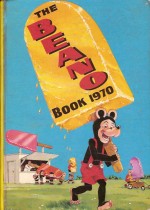
By various (DC Thomson)
Retroactively awarded ISBN: 978-0851160078
For many British readers and fans Christmas means The Beano Book (although Scots worldwide have a pretty fair claim that the season belongs to them with collections of The Broons and Oor Wullie making every December 25th massively magical) so I’ve chosen another exquisite edition to encapsulate and epitomise my personal seasonal sympathies. As ever my shamefully meagre knowledge of the creators involved forces me to a few guesses in the hope that someone with better knowledge will correct me whenever I get it embarrassingly wrong again…
This uncharacteristically summery tome opens with a double-page splash of the Bash Street Cats and Dogs (by Gordon Bell, I think) after which Roger the Dodger, Biffo the Bear and the (technically, at least) human Bash Street Kids welcome one and all to this year’s comic masterpiece.
The stories proper begin with a David Sutherland Biffo strip wherein the overworked cover-star goes for a less than restful holiday, whilst the Bash Street Kids find themselves the reluctant owners of an Elephant and the capable Kevin and Kenneth Knight discover action and adventure on a safari to Africa in their wondrous vehicle The Hovertank – a marvellous thriller from (I suspect) Sandy Calder.
Ronald Spencer’s painfully un-PC but exceedingly hilarious Little Plum follows and after puzzle pages ‘Spot the Spots!’ Dennis the Menace makes his first appearance courtesy of David Sutherland, after which ‘Plugorama’ examines notable moments in the life of the Planet’s Ugliest Boy – complete with puzzle page – and Lord Snooty (one of the longest running strips in the comic’s history) is introduced to the world of fashion in a canny yarn from Robert Nixon.
“Fastest boy on Earth†Billy Whizz by Malcolm Judge speeds into the surreal Zone, before Minnie the Minx learns to love and hate ballet lessons in a stunning piece from Jim Petrie after which the two-page Who’s Who quiz is followed by Pups Parade starring the Bash Street Pups (the unlovely pets of those unlovely kids) by Gordon Bell.
Robert Nixon’s Roger the Dodger features a long look at his library of scams and dodges and Snooty returns, testing the shrink-ray of Professor Screwtop, before Dennis spreads his net to terrorise anglers and ‘Here Come the Q-Bikes’ dedicates 16 pages to the adventures of the plucky cyclists and their weaponised velocipedes complete with tests and puzzles from Andy Hutton. The Q-Bikes were a team of young adventurers with technologically advanced push-bikes who always found danger and excitement wherever they pedalled.
Toots of the Bash Street Kids had a solo spot this year combining girly things like cooking and cleaning with malevolence and mayhem after which Biffo visited his voracious cousins The Three Bears in America and came home with a whole new and wholly unwelcome physique. Billy Whizz then revealed the secret of his unique hair-do and Minnie suffered surreal torture at the hands of a hidden hapless enemy…
Smiffy and Billy Whizz revealed some cunning Trick Pics before The Bash Street Cats, Dogs and Kids all failed to take over the Beano Book whilst Roger the Dodger outsmarted himself and The 3 Bears lost out to arch rival Grizzly Gus but still got to gobble all the vittles in a smart yarn by Bob McGrath.
Boy superhero Billy the Cat saved Christmas in a smart thriller by Sandy Calder after which Little Plum was hard pushed to cope with a heavy snowfall and, after a make-your-own-picture-dice page entitled ‘Ma Whizz, the Dodging Bear’, we spend a ‘Weekend with Alfie’ (Billy Whizz’s Kid Brother) thanks to the ever impressive Malcolm Judge and The Three Bears then fail in their attempt to invade the local general store…
An extended Bash Street Kids plumbing fiasco follows that, after which Dennis the Menace brings the fun to a full stop even whilst plugging his own dedicated Christmas Special…
These annuals were traditionally produced in the wonderful “half-colour†British publishers used to keep costs down. This was done by printing sections of the books with only two plates, such as blue/Cyan and red/Magenta: The versatility and colour range this provided was astounding. Even now this technique inescapably screams “Holiday extras†for me and my contemporaries.
This is another astoundingly compelling edition, and even in the absence of legendary creators such as Dudley Watkins, Leo Baxendale and Ken Reid there’s no appreciable decline in the mayhem and anarchy quotas and so much merriment on offer I can’t believe this book is over forty years old. If ever anything needed to be issued as commemorative collections it’s these fabulous DC Thomson annuals…
Divorcing the sheer quality of this brilliant book from nostalgia may be a healthy exercise – perhaps impossible, but I’m perfectly happy to simply wallow in the magical emotions this ‘almost-colourful’ annual still stirs. It’s a fabulous laugh-and-thrill-packed read, from a magical time and turning those stiffened two-colour pages is always an unmatchable Christmas experience, which is still relatively easy to find these days.
Can I interest you in a little slice, perhaps…?
© 1969 DC Thomson & Co., Ltd.


